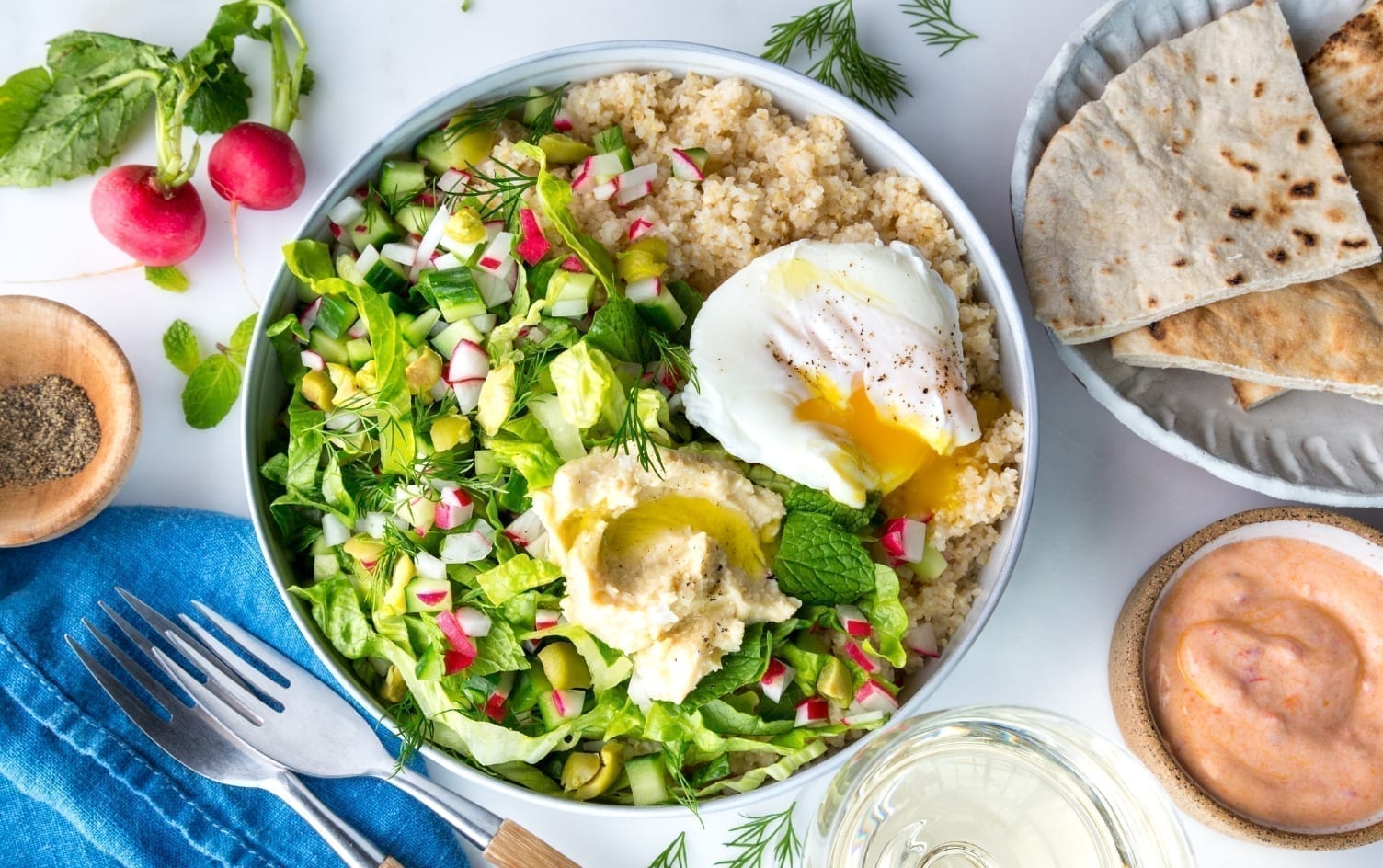It turns out grades aren’t just for school, they can also be used to rank the quality of your diet. The good news: A recent review in JAMA shows the macronutrient composition (Think: protein, carbs and fat) among U.S. adults’ diets has improved over time. The not-so-good news: There’s still a high intake of low-quality carbs and saturated fat standing in the way of obtaining the coveted A+.
THE SCIENCE
The grade on our diet report card might be going up — 58% of Americans fell within the U.S. Dietary Guidelines for healthy eating compared to just 49% a decade ago, according to the latest data — but there is still much room to bolster those scores.
While total carbohydrate intake declined 2%, simple carbohydrates such as refined grains and starchy vegetables still accounted for 42% of our daily calories, while just 9% of calories came from whole grains, fruits and other complex carbohydrates. Moreover, the intake of saturated fats, which accounted for 12% of daily calories, was also higher than the recommended 10% limit.
WHAT AN A+DIET LOOKS LIKE
VARIED PROTEIN
The macro is key for muscle growth, maintenance and repair. “Too often our favorite protein sources (like red meat and dairy) are also high in saturated fats,” says Nancy Farrell Allen, MS, RD, spokesperson for the Academy of Nutrition and Dietetics. She recommends varying your protein intake and opting for plant-based sources like quinoa, which contain all of the essential amino acids, as well as omega-3-rich fatty fish like salmon.
COMPLEX CARBS
Thanks to popular diet plans like keto, carbs often get an unnecessary bad rap. But “complex carbohydrates like whole grains, fruits, nuts and seeds are an important part of a healthy diet,” says Kelly Jones, a Philadelphia-based registered dietitian specializing in sports and fitness.
“Carbohydrates are the quickest and most efficient energy source to fuel muscles during exercise and they’re the main fuel source for the brain,” she explains. “When most of the carbohydrates you consume are rich in vitamins, minerals and antioxidants, you’re supporting recovery from exercise and long-term health even more.” They’re also slow-digesting, which means they help keep your blood sugar stable and prevent you from crashing later. Swap simple carbs like cereal and white bread for more complex, fiber-rich carbs like oats and whole grains, suggests Jones.
HEALTHY FATS
In general, “it’s a good idea to limit your saturated fat intake to below 10% of your daily calories because it can raise LDL or ‘bad’ cholesterol, increasing the risk of heart disease,” says Farrell Allen. Keep a food log and try to minimize foods rich in saturated fat such as fatty cuts of meat, processed snacks and sweets.
LOW-SODIUM
Even if you never add salt to your meal, you might be consuming more than the daily 2,300 milligrams (the equivalent of one teaspoon of salt) recommended in the U.S. Dietary Guidelines. Processed foods such as cold cuts, canned soups, pasta sauces, frozen pizza, bread and soy sauce are often chock full of added salt. These hidden sources of sodium are likely one of the reasons the average American consumes 3,400 milligrams of sodium per day.
Moreover, a study in The Lancet found eating more than 5 milligrams of sodium per day — about 2.5 teaspoons of salt — was associated with a greater risk of cardiovascular disease and stroke.
Try to cut back on sodium with these helpful tips and recipe ideas.
MINIMAL ADDED SUGAR
Not all sugar is bad. Farrell Allen notes that nutritious foods like fruit and milk contain natural sugars, but the big problem is added sugar. Because added sugar represents a source of calories with little nutrients and spikes blood sugar levels, it can cause health problems like weight gain and an increased risk of Type 2 diabetes and heart disease.
Check the nutrition labels for ingredients like high-fructose corn syrup, dextrose and fructose, among others, which all signal added sugar. Work to cut back on added sugar so it’s 150 calories or less per day for men and 100 calories or less for women.




